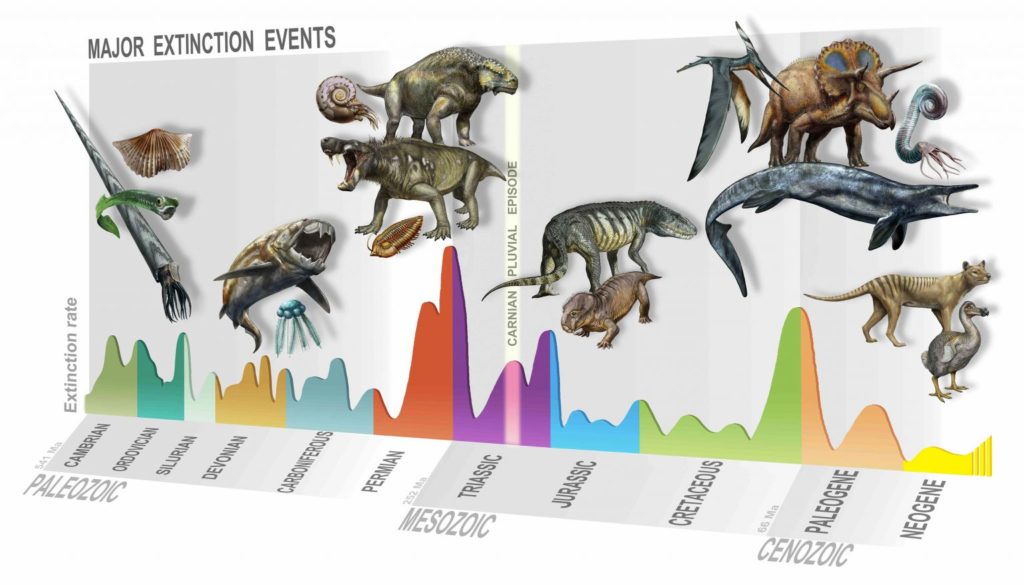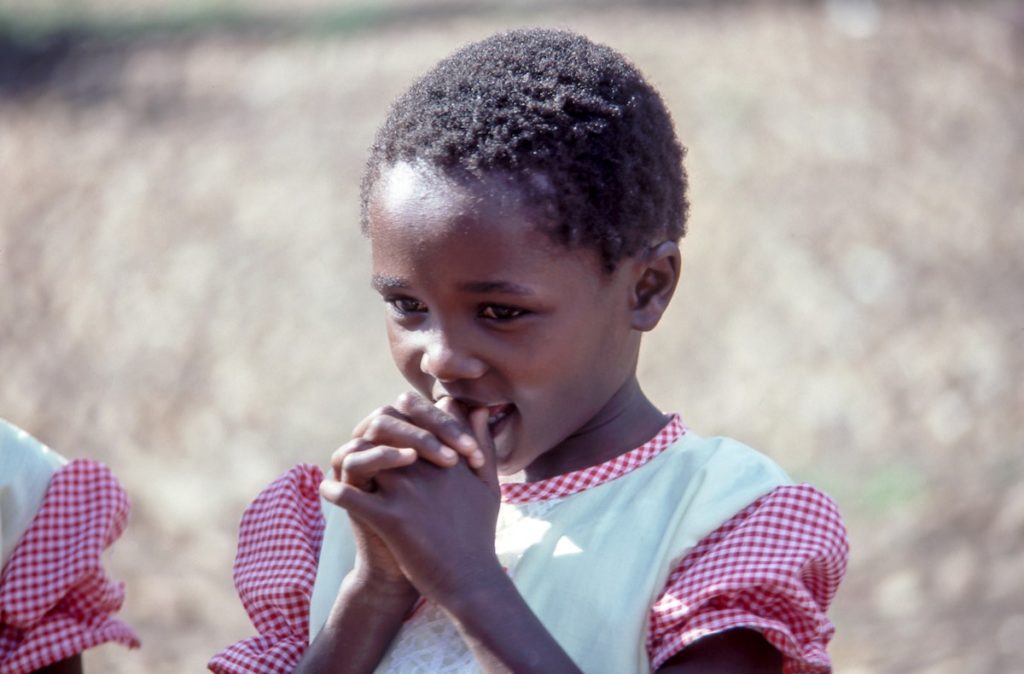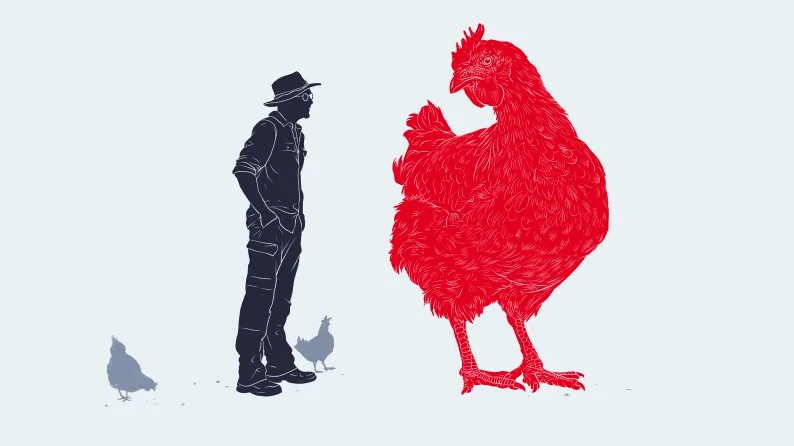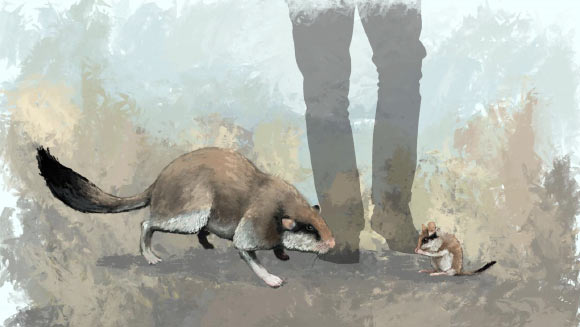By: The Posts Author | Posted on: 25 Oct 21
In this video, Corey Devos and I respond to a great question from a Daily Evolver listener: “What do we leave behind as we grow?” The post Bite Size: What To Leave Behind As We Evolve – 4 mins appeared first on The Daily Evolver.
In this video, Corey Devos and I respond to a great question from a Daily Evolver listener: “What do we leave behind as we grow?” The post Bite Size: What To Leave Behind As We Evolve – 4 mins appeared first on The Daily Evolver.
By: The Posts Author | Posted on: 22 Dec 20
The Long Now Foundation · James Nestor – The Future of Breathing Drawing on thousands of years of medical texts and recent cutting-edge studies in pulmonology, psychology, biochemistry, and human physiology, journalist James Nestor questions the conventional wisdom of what we thought we knew about our most basic biological function, breathing. Nestor tracks down men and women exploring the science behind ancient breathing practices like Pranayama, Sudarshan Kriya, and Tummo and teams up with pulmonary specialists to scientifically test long-held beliefs about how we breathe. His inquiry leads to the understanding that breathing is in many ways as important as
The Long Now Foundation · James Nestor – The Future of Breathing Drawing on thousands of years of medical texts and recent cutting-edge studies in pulmonology, psychology, biochemistry, and human physiology, journalist James Nestor questions the conventional wisdom of what we thought we knew about our most basic biological function, breathing. Nestor tracks down men and women exploring the science
By: The Posts Author | Posted on: 22 Dec 20
The Long Now Foundation · James Nestor – The Future of Breathing Drawing on thousands of years of medical texts and recent cutting-edge studies in pulmonology, psychology, biochemistry, and human physiology, journalist James Nestor questions the conventional wisdom of what we thought we knew about our most basic biological function, breathing. Nestor tracks down men and women exploring the science behind ancient breathing practices like Pranayama, Sudarshan Kriya, and Tummo and teams up with pulmonary specialists to scientifically test long-held beliefs about how we breathe. His inquiry leads to the understanding that breathing is in many ways as important as
The Long Now Foundation · James Nestor – The Future of Breathing Drawing on thousands of years of medical texts and recent cutting-edge studies in pulmonology, psychology, biochemistry, and human physiology, journalist James Nestor questions the conventional wisdom of what we thought we knew about our most basic biological function, breathing. Nestor tracks down men and women exploring the science

By: The Posts Author | Posted on: 28 Sep 20
How many mass extinctions has the Earth had, really? Most people talk today as if it’s five, but where one draws the line determines everything, and some say over twenty. However many it might be, new mass extinctions seem to reveal themselves with shocking frequency. Just last year researchers argued for another giant die-off just preceding the Earth’s worst, the brutal end-Permian. Now, one more has come into focus as stratigraphy improves. With that, four of the most awful things that life has ever suffered all came down (in many cases, literally, as volcanic ash) within 60 million years. Not
How many mass extinctions has the Earth had, really? Most people talk today as if it’s five, but where one draws the line determines everything, and some say over twenty. However many it might be, new mass extinctions seem to reveal themselves with shocking frequency. Just last year researchers argued for another giant die-off just preceding the Earth’s worst, the
By: The Posts Author | Posted on: 28 Aug 20
“Claire and I listened to Jeff’s latest podcast on Sunday and it was a breath of fresh air. Highly recommended if you’re upset by the current culture wars. (if you’re not, are you still alive?) Yes, Jeff uses some integral jargon from time to time but I think anyone will appreciate his view from 10,000 feet.” – Bill Epperly, PhD, of Integral Awakenings Every stage of human development is experienced by its subjects as an awakening into a new world. Traditional religious believers (amber/blue meme) “wake up” to the reality of a transcendent God or Nirvana. Modern rationalists (orange meme)
“Claire and I listened to Jeff’s latest podcast on Sunday and it was a breath of fresh air. Highly recommended if you’re upset by the current culture wars. (if you’re not, are you still alive?) Yes, Jeff uses some integral jargon from time to time but I think anyone will appreciate his view from 10,000 feet.” – Bill Epperly, PhD,

By: The Posts Author | Posted on: 6 Aug 20
Big questions abound regarding the protracted childhood of Homo sapiens, but there’s a growing argument that it’s an adaptation to the increased complexity of our social environment and the need to learn longer and harder in order to handle the ever-raising bar of adulthood. (Just look to the explosion of requisite schooling over the last century for a concrete example of how childhood grows along with social complexity.) It’s a tradeoff between genetic inheritance and enculturation — see also Kevin Kelly’s remarks in The Inevitable that we have entered an age of lifelong learning and the 21st Century requires all
Big questions abound regarding the protracted childhood of Homo sapiens, but there’s a growing argument that it’s an adaptation to the increased complexity of our social environment and the need to learn longer and harder in order to handle the ever-raising bar of adulthood. (Just look to the explosion of requisite schooling over the last century for a concrete example

By: The Posts Author | Posted on: 31 Jul 20
Jim Cooke / GizmodoGizmodo asks half a dozen natural historians to speculate on who is going to be doing what jobs on Earth after the people disappear. One of the streams that runs wide and deep through this series of fun thought experiments is how so many niches stay the same through catastrophic changes in the roster of Earth’s animals. Dinosaurs die out but giant predatory birds evolve to take their place; butterflies took over from (unrelated) dot-winged, nectar-sipping giant lacewing pollinator forebears; before orcas there were flippered ocean-going crocodiles, and there will probably be more one day. In Annie
Jim Cooke / GizmodoGizmodo asks half a dozen natural historians to speculate on who is going to be doing what jobs on Earth after the people disappear. One of the streams that runs wide and deep through this series of fun thought experiments is how so many niches stay the same through catastrophic changes in the roster of Earth’s animals.

By: The Posts Author | Posted on: 29 Jul 20
Samuel Velasco/Quanta MagazineLiving in a world with multiple spatiotemporal scales, the very small and fast can often drive the future of the very large and slow: Microscopic genetic mutations change macroscopic anatomy. Undetectably small variations in local climate change global weather patterns (the infamous “butterfly effect”). And now, one more example comes from a new theory about why DNA on modern Earth only twists in one of two possible directions: Our spirals might all trace back to an unexpected influence from cosmic rays. Cosmic ray showers, like DNA strands, have handedness. Physical events typically break right as often as they
Samuel Velasco/Quanta MagazineLiving in a world with multiple spatiotemporal scales, the very small and fast can often drive the future of the very large and slow: Microscopic genetic mutations change macroscopic anatomy. Undetectably small variations in local climate change global weather patterns (the infamous “butterfly effect”). And now, one more example comes from a new theory about why DNA on

By: The Posts Author | Posted on: 24 Jul 20
Pleistocene dormouse Leithia melitensis was the size of a house cat. New computer-aided reconstructions show a skull as long as an entire modern dormouse. It’s a textbook example of “island gigantism,” in which, biologists hypothesize, fewer terrestrial predators and more pressure from predatory birds selects for a much larger body size in some island organisms.
Pleistocene dormouse Leithia melitensis was the size of a house cat. New computer-aided reconstructions show a skull as long as an entire modern dormouse. It’s a textbook example of “island gigantism,” in which, biologists hypothesize, fewer terrestrial predators and more pressure from predatory birds selects for a much larger body size in some island organisms.

By: The Posts Author | Posted on: 4 Jul 20
It’s not just about trying… It is about learning.Continue reading on Medium »
It’s not just about trying… It is about learning.Continue reading on Medium »







